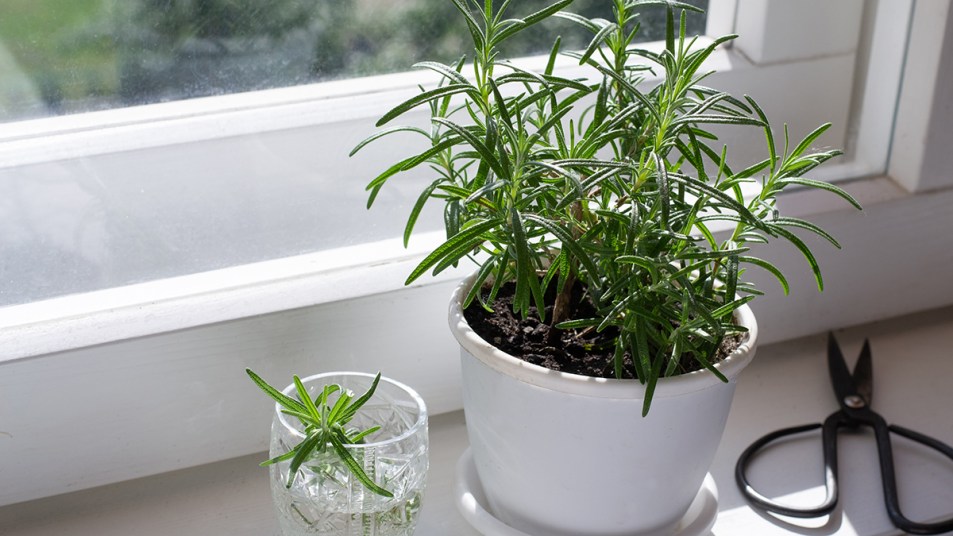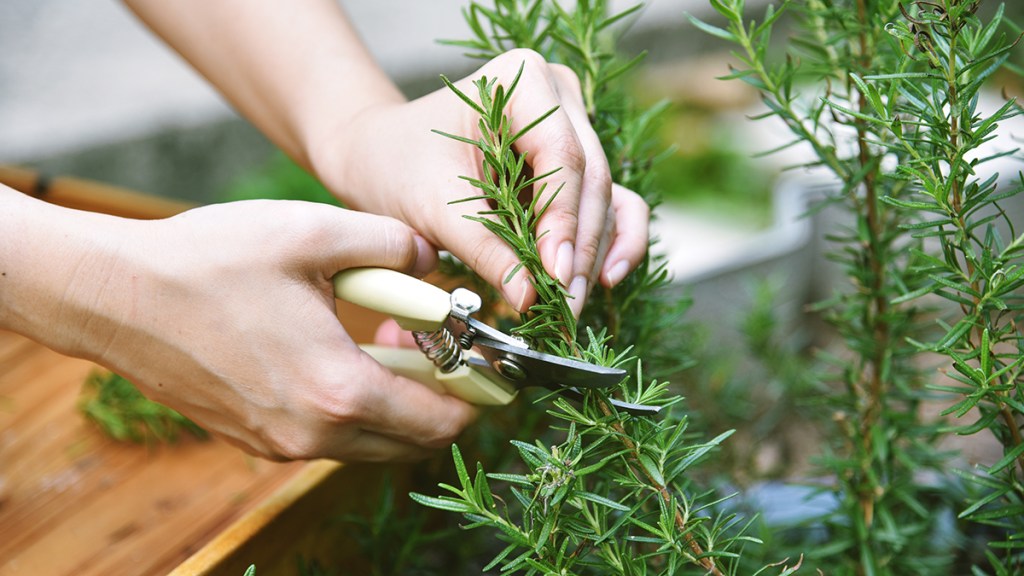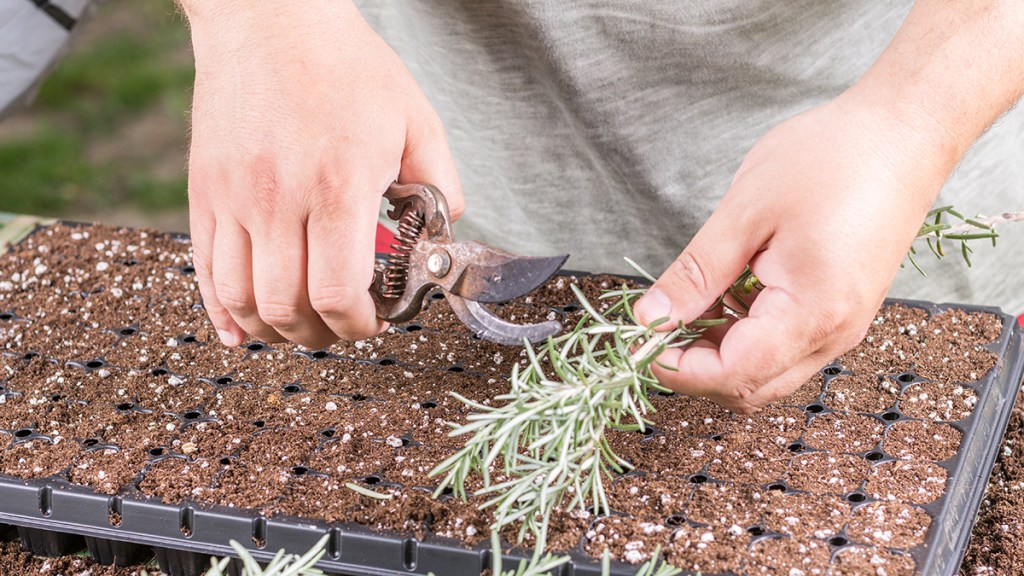Garden Pro: Growing Your Own Rosemary From Cuttings Is Easier Than You’d Think
It saves money and ensures you always have this healing, delicious herb on hand

Fresh sprigs of rosemary are the perfect flavorful complement and garnish to your favorite dishes and drinks. But did you know that your leftover sprigs from the supermarket or farmer’s market can be used to grow a whole rosemary plant? Or that you can propagate rosemary cuttings from your herb garden into new plants?
Here, gardening expert Gary Pilarchik, co-author of the forthcoming book Growing An Edible Landscape (Buy on Amazon, $27.99) and @TheRustedGarden on Youtube, shares easy methods for growing rosemary plants from cuttings and tips for how to properly care for them so you have a continuous harvest of herbs. Read on for the simple how-tos.
What are rosemary cuttings?
Rosemary cuttings are sprigs cut from an existing rosemary plant. You can use them to grow new rosemary plants. They are harvested from the new “green” growth on a plant instead of the woody stems located at the base of the plant. (Click through to learn why rosemary tea is one of the best teas for allergies.)
Why should you grow your own rosemary from cuttings?
“Herbs are very expensive to buy and growing your own from cuttings not only saves you money, but it also gives you a continuous harvest of fresh herbs for several months for free,” says Pilarchik. (Click through for tips on saving money at the farmers market.) And you’re not limited to rosemary. You can take green, new-growth cuttings from many herbs, such as basil, mint, thyme, oregano, lavender and sage. Simply follow the same steps below to grow your own new herb plants!
No soil on hand? Grow rosemary in a cup of water
One of the easiest ways to grow rosemary from cuttings is in a cup of water. To start, Pilarchik suggests gathering a few 3”-long fresh rosemary sprigs from your supermarket or farmer’s market bundle. If you’re looking to give away rosemary cuttings from an established rosemary plant, simply snip 3”-long cuttings from the new, green growth — not from the woody stems at the base of the plant. For best results, you want to do this in the late spring and throughout the summer while the shoots are springy, but not so soft that they will wilt in the heat of the day.

Next, remove half of the leaves on from the cutting and submerge 1 inch of the stem end of each in a cup of water; set cups in a sunny windowsill. “Change the water two times per week and a strong root system will develop in four to eight weeks,” says Pilarchik.
Once roots are established, you can nestle the roots into pots or containers filled with potting mix and keep them inside on a sunny windowsill, watering when soil is dry. If you’d like to plant your rosemary outdoors, transition the plants slowly over a one-week period since they’re not used to the sun’s UV rays, notes Pilarchik. Set pots outside for about one hour of morning sun , then increase the time by an hour each day until you leave them out for a full eight hours of sun. “This process is called ‘hardening off’ and it is essential as the plants will be damaged if put in the sun for a full eight hours after being grown in a house,” he says.
Have a little seed starting mix on hand? Try growing cuttings in it!
Instead of the water method, you can establish rosemary cutting roots right in a seed starting mix, like Hoffman Seed Starter Soil (Buy on Amazon, $15.33), says Pilarchik. Starting mix is usually soilless and made up of peat moss and vermiculite. Simply add the seed starting mix to a small 3-inch pot, then nestle the bare ends of two to three rosemary sprigs into the mix. Tip: You can dip the ends of the stems in honey before adding them to the mix to encourage growth. Honey is a natural substitute for synthetic rooting hormones and will nourish the cutting, while promoting root growth. (Find more uses for honey here.) Place pot in a windowsill or area in the house that gets some sunlight and keep soil moist. Once the roots establish in four to eight weeks, you can transplant the cuttings into a larger pot filled with potting mix.

What to do with your rosemary cuttings
Once you’ve grown your own rosemary, of course you can use it to flavor your favorite soups, stews and other recipes (see below for ideas), but you can also use it to make a fresh wreath, whip up homemade rosemary soap or include it in a refreshing Paloma cocktail! (Click through to see how to use rosemary to beat brain fog.)
If you have more herbs on hand than you know what to do with, check out these articles:
This Clever Method For Drying Fresh Herbs Saves Money and Prevents Waste
From Elevating Recipes To Curing Springtime Sniffles — These 20 Herbs Serve Many Purposes
18 Aromatic Recipes Filled With Your Favorite Herbs and Spices












